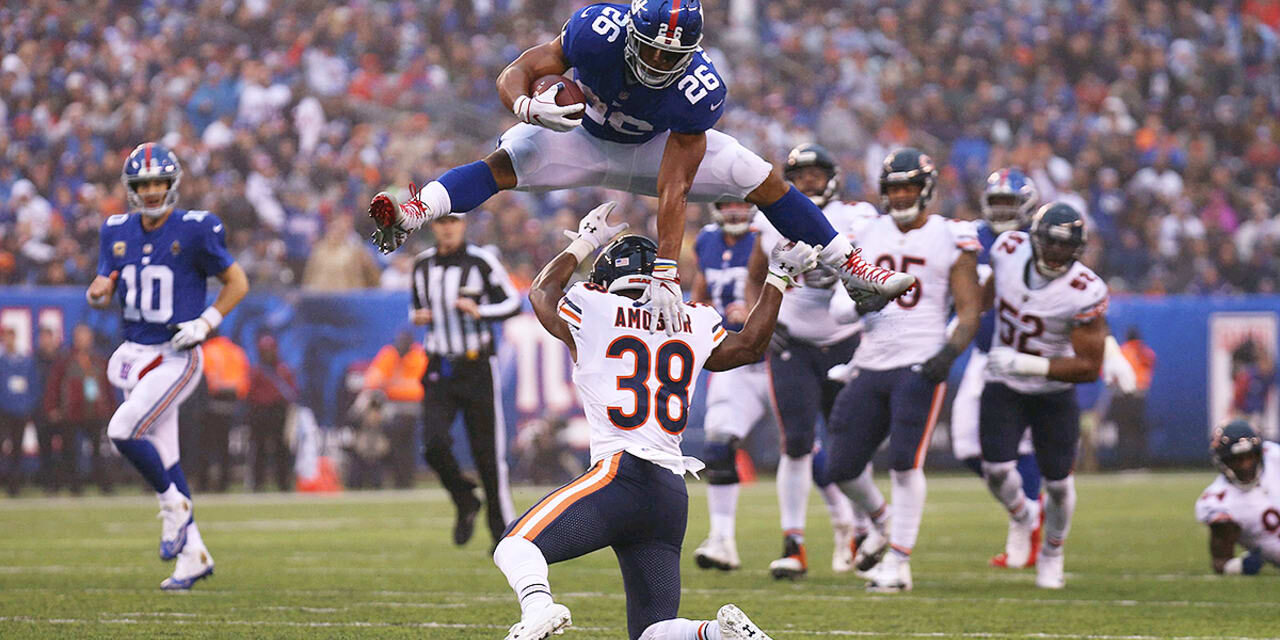Jonathan Taylor is a star running back for the Indianapolis Colts, a team that plays in the Southern Division of the American Football Conference in the National Football League. In 2021, Taylor led the NFL is rushing yards from scrimmage. He recently emerged from a one-on-one meeting on the bus of team owner Jim Irsay and demanded a trade. In response, Irsay sent out a tweet, saying “We’re not trading Jonathan … end of discussion. Not now and not in October!” This Halloween is the last day of the upcoming season that NFL teams are permitted to trade players.
For fans of the Colts, this is an unhappy development, but it’s similar to situations that have played out this offseason in New York, Philadelphia, Dallas, Minnesota, Las Vegas, and Los Angeles. NFL running backs are extremely disgruntled at the moment and it’s because they aren’t getting paid.
This isn’t a sports blog, and I do not want to bore you with all the intricacies of how the NFL pay scale works, so I’ll just give the briefest outline. There are just a few key things you need to understand. First, unlike the situation in Major League Baseball, the NFL has a hard salary cap that requires general managers to make tough decisions on how much to allocate to different position groups. Second, when a player is drafted into the NFL he receives a four-year rookie contract. If the player is drafted in the first round of the draft, the team has the option to exercise a fifth-year option. Irrespective of the position he plays, the higher a player is drafted, the higher his salary, and there’s very little room to negotiate.
All that changes after four years (or five years if the option is exercised). At that point a player becomes a free agent and can make serious money. A relatively low percentage of players cash in and get a second NFL contract, but here is when different position groups are paid vastly different amounts of money. The top NFL quarterbacks reaching free agency this past year topped $50 million a year. The top running back, Miles Sanders of the Super Bowl runner-up Philadelphia Eagles, signed a contract with the Carolina Panthers worth about $6 million a year.
The last detail that’s important to understand involves something called the “Franchise Tag.” This provision allows each NFL team to designate one player per season as too important to reach free agency. They get paid according to a formula based on what other top players at their position are paid. A quarterback on the franchise tag this year would get somewhere around $30 million, while a running back gets about $10 million. A player can only be franchise tagged twice before they’re allowed to be a free agent.
This year, three running backs were franchise tagged: Saquon Barkley of the New York Giants, Josh Jacobs of the Las Vegas Raiders (who lead the league in rushing last year), and Tony Pollard of the Dallas Cowboys. They each sought long-term deals with a lot of guaranteed money, but all were denied. Pollard and Barkley signed the tagged contract, but so far Jacobs is holding out.
Quarterback is obviously the most important position on a football team, but anyone with even a passing awareness of the NFL is familiar with names like Jim Brown, Franco Harris, Tony Dorsett, Eric Dickerson, Barry Sanders and Emmitt Smith. Traditionally, running backs have been the second-tier stars of the league, and the best of them used to be paid handsomely. Today, they are the only position group getting paid less than they were before the latest, very lucrative, NFL television deal.
So, what changed?
The answer is analytics. Everything you can imagine (and many things you couldn’t) is measured by today’s top sports leagues, and then run through computers. The computers say that running backs take such a pounding that their production begins to decline right around the time they reach free agency. They gain fewer yards and they miss more time to injury, which makes it a bad bet to give a running back a second contract, especially if that contract includes a lot of guaranteed money. The situation sticks out so starkly in the analytics that even the best running backs are considered bad investments. Add to this that rules changes have made it easier to successfully pass the ball, so teams throw the ball more than they rush it. The result is that the analytics devalue the contribution of good rushers to winning games.
This creates a real problem for running backs because it’s true they take a pounding. Of all the positions in the game, they are the ones likely to have a shortened career due to injury or wear and tear, which means they’re the most interested in getting a high average salary. Quarterbacks like Tom Brady and Aaron Rodgers not only get paid three, four or five times as much as star running backs, but they’re able to do it for 15-20 years.
In a different world, this might be considered a golden age for running backs. Beyond the players already mentioned, the league is full of extremely talented backs, including players like the Cleveland Browns’ Nick Chubb, the San Francisco 49ers’ Christian McCaffrey, the Los Angeles Chargers’ Austin Ekeler, the Pittsburgh Steelers’ Najae Harris, and the Tennessee Titans’ Derrick Henry. Many members of this group recently became so concerned about the devaluation of their position that they held a meeting to discuss what can be done. But the truth is, they’re victims of science.
Once you take the emotion out of things, it doesn’t matter if a player has been productive in the past. It doesn’t matter if they’re a leader in the locker room or the local community. It doesn’t matter how many of their uniforms the fans purchase. The numbers say the position of running back should only take up a small percentage of a team’s salary cap. The numbers say that a player like Saquon Barkley is only worth $10-12 million a year, if that, and that it would be foolish to give him any economic security against injury by guaranteeing money in future years.
On the surface, this can seem absurd. While Barkley has suffered some injuries during his brief career, he’s clearly been the best player on the New York Giants’ offense. Another first round pick of the Giants, tight end Evan Engram, was run out of town for dropping too many passes. He played one season with the Jacksonville Jaguars before being franchise tagged, and then replaced the tag with a three-year, $41.25 million contact with $24 million guaranteed. The idea that Engram is a more valuable player than Barkley makes no sense, but science says a tight end is more valuable and a safer investment than a running back.
The problem in Indianapolis arose when owner Irsay defended this disparity.
“I mean, if I die tonight and Jonathan Taylor’s out of the league, no one’s going to miss us,” he told reporters. “The league goes on. We know that. The National Football (League) rolls on. It doesn’t matter who comes and who goes, and it’s a privilege to be part of it. Now’s the time for us to do our work. Now’s the time as an organization. And, you know, players who are 24, 25 years old, now’s the time to seize the moment.”
That was a pretty disrespectful of Taylor, the organization’s star player on what has been a putrid team. And it rather aggressively missed the point. How is Taylor supposed to “seize the moment”? The better he plays, the more money he should expect, and yet the more money he demands the more likely that he’ll simply be cut. That’s what happened to Dalvin Cook of the Minnesota Vikings who ran for over 1,000 yards every year from 2019 to 2022 and is currently unemployed because neither the Vikings nor the rest of the league want to bet on him continuing to play at a high level.
I’m of two minds about this. On the one hand, I am in favor of using numbers and science to assist in making decisions. On the whole, this should produce better results. On the other hand, some things can’t be measured, and some risks are worth taking simply because hard work and dedication are worth rewarding.
The analytics might say that Saquon Barkley is worth less than Evan Engram, but no human observer would agree. And it’s simply not true that Colts fans won’t miss Jonathan Taylor when he’s gone. Taylor is the team’s most exciting player and one of the few reasons to spend three hours watching one of their games.
In general, I’m most often frustrated when people refuse to respect and utilize science in their decision making, a particular flaw of the Republican Party (see: climate change), but people can also go wrong when they remove too much of the human element (see Democrats losing elections to poorly refuted populist pitches).
The problems of a handful of millionaire athletes are pretty far down the list of troubling issues we face, but the situation shows how things can get out of whack if we place too much emphasis on one side at the expense of the other. In this case, how much a running back is worth to a team is being put through a dogmatic formula posing as science. Each player is different and presents a different investment risk. A true team leader who sets a good example, like Barkley, is worth more than any formula can estimate.
There’s a lesson in that for other, more important areas of life.







